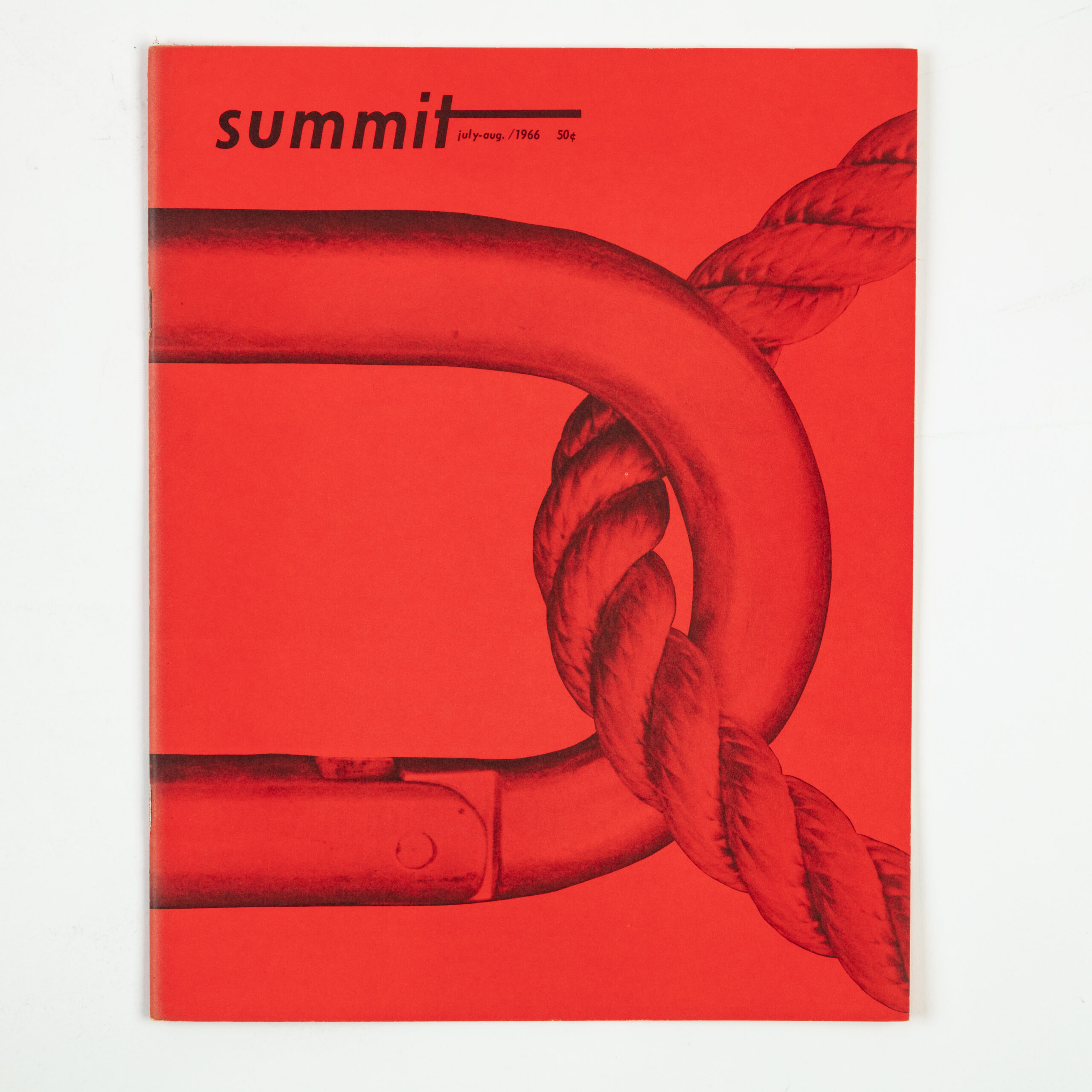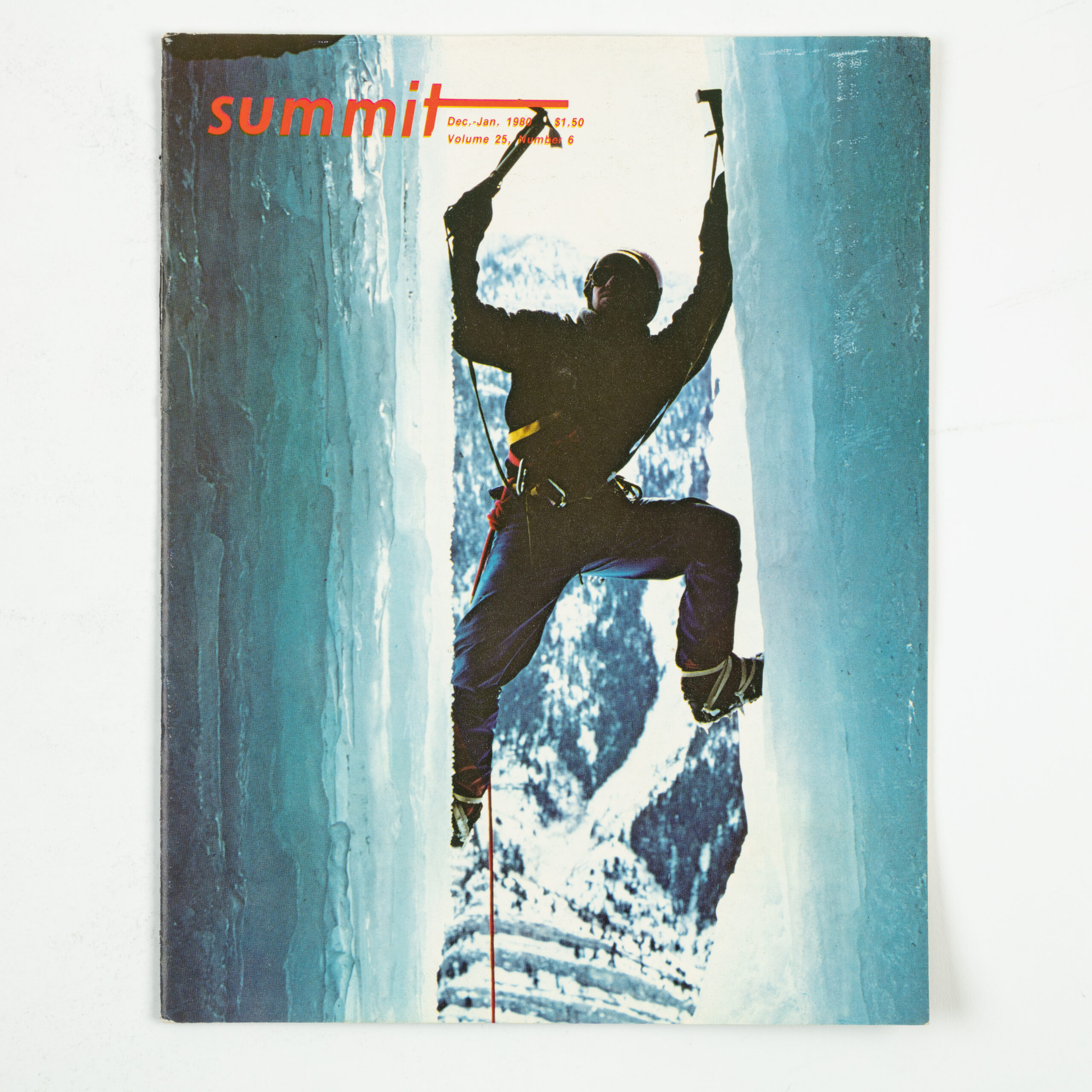Summit Journal
Editor: Michael Levy
Creative Director: Randall Levensaler
Heidi: As a senior editor for many titles in the outdoor industry, you’ve seen dramatic change, why resurrect a magazine, and why summit journal?
Michael: There are a few reasons, I guess. Some of it had to do with other examples I’d seen of that. Duane Raleigh, my former boss at Rock and Ice magazine, bought the rights to Ascent magazine in the 2000s at some point. Ascent had been an annual climbing publication put out by the Sierra Club, and it did some incredible stuff, but it was well past its heyday by the time Duane acquired it. He breathed new life into it and created a wonderful new version of Ascent that – until a couple of years ago when it ceased publication – was the best climbing pub around, for my money.
And so that model, of resurrecting a former title, really intrigued me. It allows you to leverage an older publication’s wonderful history and legacy, but also do something new. To have kind of the best of both worlds. Summit had been on my radar for a number of years. In the back of my mind, I’d always thought it seemed ripe to be resurrected. It was the first monthly climbing magazine in America, founded in 1955 by two women, Jean Crenshaw and Helen Kilness. They were visionaries, way ahead of their time in terms of climbing journalism. And so for a long time, Summit was the climbing magazine. Jean and Helen published it until 1989, and then they sold the rights. The title had a second life from 1990-1996 as a glossy quarterly that also did some great stuff. And since then it’s been dormant.
So what I loved about the idea of resurrecting Summit was being able to draw a straight line from Royal Robbins, Yvon Chouinard, Doug Robinson – all legends from the Golden Age of Yosemite Climbing who were involved with or wrote for the magazine – to today. Also, the magazine just had such a bold aesthetic: the retro covers are just too cool. Very stylish. I’m hoping to channel some of that into the new Summit Journal.
Will there be any digital content or only print?
It’s print only. My thinking on that is, basically, with the glut of content online, there’s something to be said for a highly curated, physical product. There’s so much out there on the Internet that a lot of stuff, much of it quite good, just gets lost in the noise. But something tactile that you can feel between your fingers and read over a cup of coffee or a beer, that prioritizes long-form. It might not reach as many people, but the people it does reach will be that much more invested. Print feels a bit like vinyl to me; what’s old is new again. Just like vinyl isn’t going to replace Spotify, print isn’t going to replace digital, but there is a very real audience out there (and I’m in it) that likes analog media, and appreciates reading things that aren’t on a screen.
And building off that, print also felt like a more achievable business model, in a strange way. Though print has a higher bar to entry–the hard costs to get it off the ground are greater, and without attracting enough subscribers you’re dead in the water–once cleared, the way forward feels much clearer. You can only fill a magazine with so many articles, after all.
Tell us about your first conversation with Paula Crenshaw, Jean’s niece, about bringing the Summit back.
So I actually first emailed with Paula several years ago, after Jean died. I wrote a short obituary. When I got back in touch with her early this year I shared what at that point was just my very vague idea of resurrecting Summit – and she was really supportive of it from the get-go. (That’s been one of the most gratifying things about this project: everyone has such fond memories of the original that they get really enthusiastic about the magazine coming back for a new era and a new audience.)
Paula herself was a climber back in the day. These days her real passion is marksmanship – she’s a competitive shooter! But professionally, she’s a doctor. Resurrecting Summit was never something that she wanted to do herself at any point. But she thought it would be a lovely thing for me to revive it – if I could figure out how, which was still a big if at that point. Until chatting with Paula, the idea was still just that, if only because as I told her in that call, I wouldn’t have pursued it any further without her blessing. The legacy of Summit, and what Jean and Helen built, didn’t feel like something that I had the right to mess with without getting explicit permission from their family. That was really important to me.
Who else is still involved from the magazine’s genesis and what has been their greatest insight?
So beyond Paula, another great supporter has been David Swanson, the guy who bought Summit from Jean and Helen in 1989 and then published it from 1990 to 1996 as Summit: The Mountain Journal. David’s publishing from that time is obviously worlds away from what the landscape is like today, but storytelling and good imagery never changes – he’s been a valuable resource and sounding board as I got my feet under me helming Summit Journal. He also has some great historical knowledge and connections. I’m in touch a little bit with John Harlin III, who edited the magazine in the 1990s and really did an incredible job. I’m hoping to have him write something for the new Summit at some point.
How are you sourcing photography?
So for this first issue I mainly turned to photographers whose work I was already familiar with from working in the industry, and then a few others who I stumbled across on Instagram and whose work I just really admired. Very little for this first issue was on commission – most of it, with a couple tiny exceptions, was already shot.
But I’m hoping to shift toward more commissioned work going forward to get more of a balance between the two: I’d love to be able to fill the pages with photography that hasn’t already been plastered far and wide across social media, and that is in direct conversation with the written pieces in the magazine.
Another thing I’m trying to do is find ways to incorporate non-climbing photography into the magazine. Climbing photos are obviously at the magazine’s core, but I don’t want it to just all be dramatic mountain vistas and action shots. So in our first issue, for example, I commissioned an essay accompanied by some breathtaking macrophotography. Basically, even though Summit is a climbing magazine, I don’t think that limits us. If something is climbing-adjacent and allows us to broaden our mandate, that to me is really exciting.
Because this was founded by two women and there was controversy and pen names in its heyday, how are you planning to honor the two female founders and be inclusive?
This is something I’m very cognizant of. In short, though I don’t have any formula or anything, I’m trying to always have an eye on the overall make-up of the magazine. In the first issue, our contributors are roughly half women, and half men. At the end of the day, the final criterion for whether something makes it into the mag is whether it’s either good writing or good photography, but there’s fantastic and powerful storytelling and imagery coming out of every corner of the climbing world these days. The main problem is that I can’t fit it all!
And I’m happy to take pitches for photo essays. We have pretty few opportunities for one-off shots in the mag, but photo essays will figure heavily in each issue. Pitch me at mlevy@summitjournal.com. Our first issue is due early 2024.



